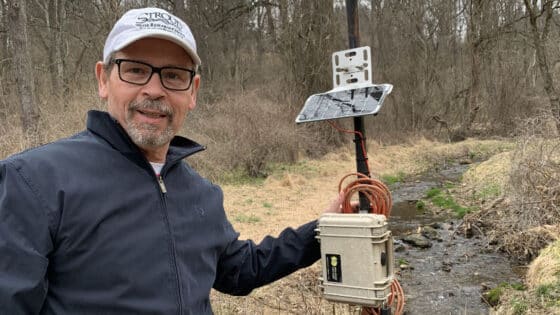Oviedo-Vargas D., T.V. Royer, and L.T. Johnson. 2013. Limnology and Oceanography 58(4):1196–1206.
doi: 10.4319/lo.2013.58.4.1196
Abstract
To investigate the coupling between carbon (C) and phosphorus (P) cycling in a human-altered stream, we conducted a whole-ecosystem manipulation of the labile dissolved organic carbon (DOC) pool in a nitrate ()-rich stream in the midwestern United States. For 6 d, we increased stream DOC by ∼ 1 mg L−1 through a continuous addition of sodium acetate. On the sixth day of the addition, ammonium () was increased by ∼ 130 µg N L−1 to examine the potential for nitrogen (N) to mediate coupled C and P cycling. Of the added DOC, 85% was retained within the treatment reach, which increased ecosystem respiration with respect to the reference reach. Alkaline phosphatase activity (APA) increased from day 1 to day 6; however, water column P uptake only increased on day 6 concurrent with the addition. Gross primary production decreased during the DOC addition relative to the reference reach, yet seemed to recover on day 6 ( addition). These results suggest that during the DOC addition, heterotrophs out-competed autotrophs for N and that sediment-sorbed P sustained the heterotrophic community while P uptake from the water column was dominated by autotrophs. Because APA and P uptake were stimulated by the simultaneous DOC and addition, P cycling appeared to be N limited, despite the high ambient concentration; this indicates a strong preferential uptake of over In streams, C and P cycling can be intrinsically coupled through biological mechanisms, and this coupling can be mediated by the availability of different forms of inorganic N.


